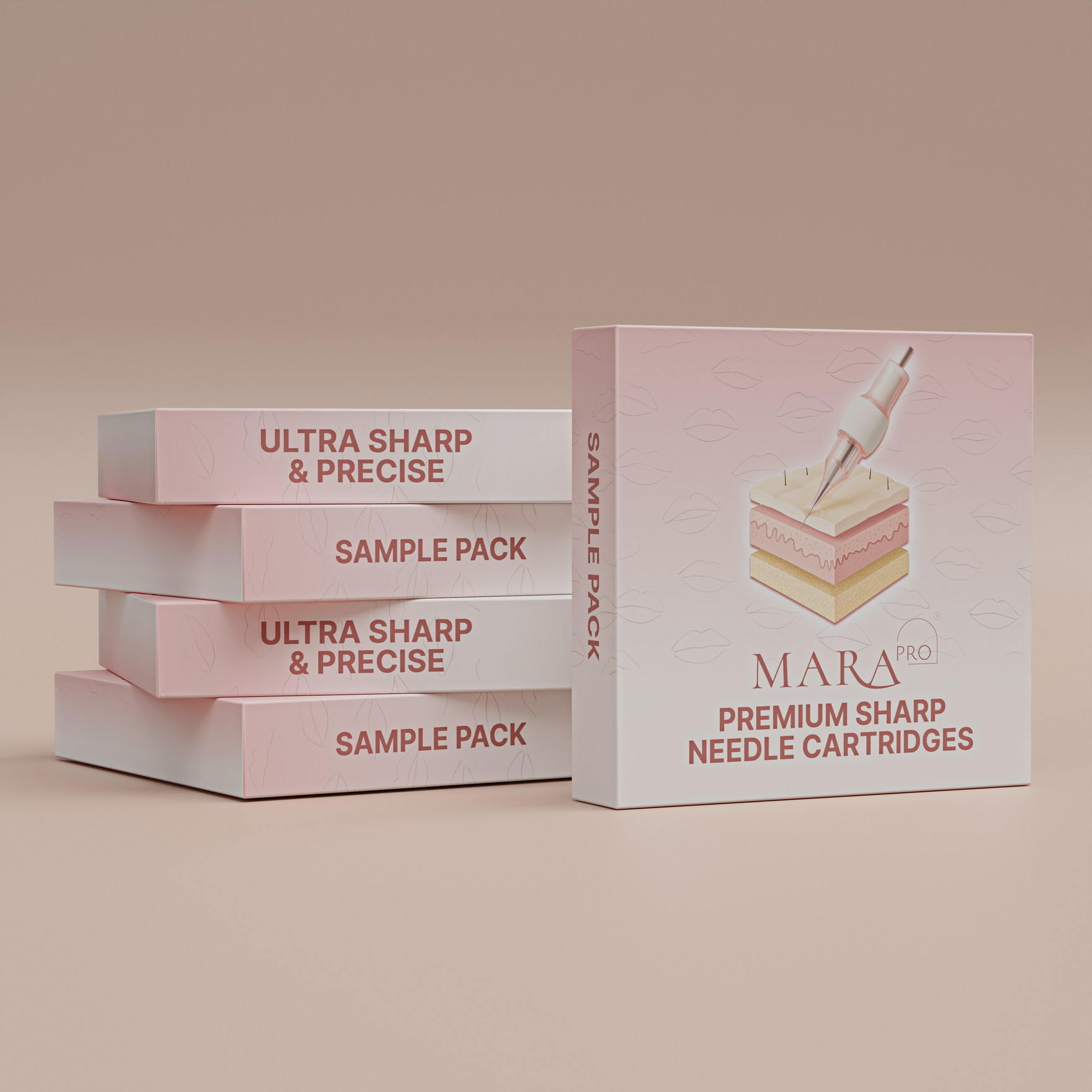Uneven healing can throw off an otherwise good permanent makeup session. Whether it is a patchy brow or lip color that fades too soon, the frustration is usually shared between the client and the artist. What’s often overlooked is how much pmu needles play into the healing process. The type, quality, and condition of the needle all affect how the skin takes in pigment and, more importantly, how it heals.
A small issue like switching needle types mid-session or using a worn-down needle can make the skin react in different ways across one treated area. Color could settle unevenly, or one side might fade faster than another. Healing can end up smooth or bumpy, depending on the way the needle moves and the pressure used. These details may seem minor, but they stand out in the healed result.
How Needle Type Affects Skin Response
Different pmu needles leave different marks on the skin, so choosing the right one matters just as much as how it is used. Needle groupings like round liners, round shaders, flat, and magnums all behave a bit differently. Each shape and number of pins creates unique results, depending on the technique and the skin type.
Round liners are precise and focused, great for crisp details, but they can be too strong for thin or delicate skin if not controlled carefully. Round shaders spread the pigment more softly, which works better for filling in color and avoids pressing too hard. Magnums cover a wider area quickly, which makes them popular for lips and larger surfaces, though they can cause trauma with extra pressure or on thinner skin.
Trouble often starts when the wrong needle is matched with the wrong skin type. Thicker brow skin might be fine with most needles, but sensitive or mature skin may not take the pigment evenly. If healing ends up patchy, splotchy, or with unexpected colorless spots, it may be a sign that the needle grouping was not the right choice.
Artists should watch for how pigment settles during the work. If certain spots fill with color quickly and others do not, or if lines look unclear right after application, it could be signaling a need to rethink the needle—rather than just the technique.
The Role of Needle Condition and Wear
New pmu needles work best when they are fresh, straight, and sharp. As soon as a needle is used several times or gets bent at the tip, it does not enter the skin the same way anymore. Instead of gliding, it may catch or scratch. This can push color to different depths, leave uneven lines, or even scratch the surface, causing unexpected trauma.
Using worn or bent needles is one of the quickest ways to create problems that only show up once the skin starts to heal. One part of an eyebrow or lip may hold color well, while another fades out or scabs away because the pigment landed too shallow or too deep. These issues can sneak by during the procedure but become obvious when results heal out unevenly.
Some warning signs that it is time to swap pmu needles include:
- Lines look shaky or inconsistent
- Needle feels like it is dragging or skipping
- Pigment pushes in too shallow or too deep with the same hand pressure
Replacing old or dull needles early makes smoother results more likely and saves time on correction later. The best healing starts with sharp tools and clean technique.
Mara Pro Shop offers a full range of quality pmu needles, including micro, flat, and cartridge styles, each packaged for one-time use to help artists avoid cross-contamination or dullness from repeat use.
Skin Trauma and Healing Reactions
It is possible for healed results to look uneven, even if the pigment and mapping are perfect. Overworking the area is a common cause, especially if an artist goes over one spot too many times, presses too hard, or uses an unsuitable needle type for the skin.
Everyone’s skin responds differently when stressed. Some clients peel more or get heavy scabbing, while others experience faded patches. Laying down strokes repeatedly in the same location can result in tiny scars or extra sensitivity. Once the skin structure changes, pigment might not hold evenly.
These issues are mostly preventable. If healing shows early signs of problems—patching, quick fading, or a stubborn spot holding too much color—think back to how many passes were done, and what needle was used. Sometimes, a gentle touch with the right configuration makes all the difference between tricky healing and an easy recovery.
Matching each pass of the needle to the skin’s condition helps reduce the stress. Pausing to check reactions between passes can make a major difference in how the area heals over time.
Matching Needle Choice to Skin Type and Area
Different skin textures and zones require different needle choices. Oily skin can need a bit more depth and sometimes a different configuration than dry or mature skin. Younger skin might handle several groupings, while thin or delicate skin responds better to shaders or smaller mags.
For example:
- Thin, sensitive lip skin may do better with a round shader than a liner, which spreads the color instead of digging in.
- Aging skin around the eyes should be treated gently, with slower passes and more flexible needle groupings.
- Scar tissue within brow areas may need less pressure and slower movement, plus careful choice in needle size, to avoid pulling up old pigment or creating new trauma.
Depth and speed make a difference for each zone. If you go too shallow, color won't last; too deep, and the area may get sore or textured. It is important to check the skin’s reaction after the initial passes and adjust quickly if things look off. Switching needle types mid-session can sometimes fix an uneven pattern before it sets in for good.
Artists should also remember to read the skin not just before but during the work. A needle configuration that works perfectly in one zone can behave very differently right next door, especially across the brows or lips.
Staying Consistent from Session to Heal
Quality healed results come from sticking to steady technique and using reliable pmu needles. Consistent results are built one careful decision at a time, from needle setup through the final pass.
Long-term trust with clients comes from working clean, watching for signs of skin fatigue, and using tools that match the task. Taking the time to swap out needles when needed and changing settings when skin changes prevent most rough healing problems.
A little extra attention to needle choice, setup, and technique can make appointments go smoother and keep results even from first session to fully healed. When artists make space to pause and double-check their gear, it saves time and touch-up stress weeks later. The best healing outcomes almost always start with the smallest, smartest adjustments before the work begins.
At Mara Pro Shop, we believe smooth, even healing starts with the right tools, and that includes using clean, well-matched pmu needles for every skin type and technique. Small choices like these can shape how pigment settles and how confident clients feel weeks later.

